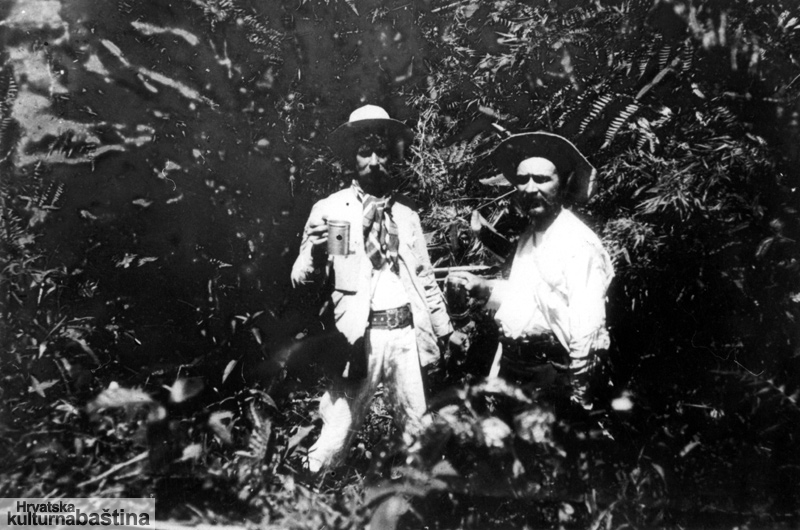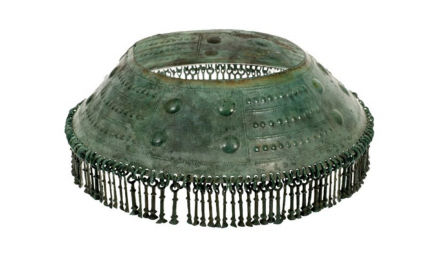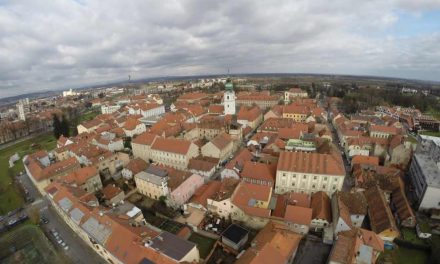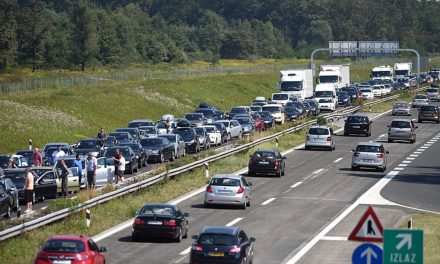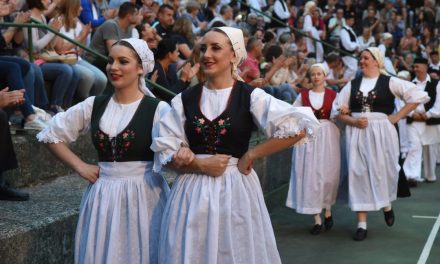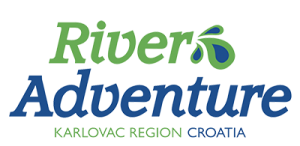Builder of the Karlovac Fortress
Martin Gambon was the first and only permanent ‘Baumeister’, chief construction engineer of Karlovac. He led the construction of the fortress walls and bastions, which were designed by Italian Renaissance masters, including the military buildings and bridges, and the Karlovac outpost, like the one in Turanj on the Korana River. He worked on these jobs from 1579 to 1589, after which he got a job in his native country Italy.
In the service of the Vatican
The philosopher, linguist and priest Juraj Križanić was born in 1618 in Obrh near Ribnik (there is an info-panel beside the remains of his house of birth). In Zagreb he finished classical grammar high school, studied philosophy in Graz, and obtained in the Vatican a doctorate in theology. He advocated Slavic unity, reconciliation of the Christian churches and social justice. On account of his work titled “Politics or talk …” he was exiled from Moscow to Siberia. There he wrote a second Croatian grammar of “Grammatical expressions…” He was killed in the Turkish siege of Vienna in 1683.
Writer, translator and ambassador
Ana Katarina Zrinski was probably born in Bosiljevo. She married in Karlovac at the age of 16, and resided in Ozalj. She wrote poems, translated, and was a leading writer of Croatian literature in 17th century. Together with her husband, ban Peter Zrinski, she was involved in revolt against the Habsburg Monarchy. After the failure of the conspiracy in 1670, in disfavour of the authorities, she died soon after in a Graz monastery.
May he always live on…
Fran Krsto Frankopan, son of the Karlovac general Vuk and sibling of Ana Katarina, was a prominent Croatian poet and translator. Upon exposing the Croatian revolt against Austrian rule in Croatia by the nobility, he was executed in 1671 as its leader along with Peter Zrinski in Wiener Neustadt (despite opposition from the Pope and numerous European rulers). He is known for his saying: “He who dies honourably lives forever “.
A philanthropist and visionary bishop
Zagreb’s Maksimir Park was named after the native Karlovac inhabitant, Maximilian Vrhovec, the Bishop of Zagreb, a cultural identity, philanthropist and a harbinger of the Illyrian movement. He organised the park as the first forest park in south-eastern Europe, which was opened in 1794. He also initiated the construction of the Louisiana Road, which connected Rijeka and Karlovac in 1811.
The famous epic originated in Karlovac
The Croatian ‘non-aristocrat’ ban, a reformer and poet Ivan Mažuranić wrote his best works in Karlovac, where he was an attorney and guardian of the poor in 1840s. There (with Josip Užarević) he wrote the first Croatian dictionary containing 40 thousand words titled the “German-Illyrian Dictionary”, and also published an epic poem “The Death of Smail-aga Čengić”, one of the most important works in Croatian literature.
The most important Croatian painter of the 19th century
Vjekoslav Karas was first educated and most important painter of the 19th century in Croatia. In Italy, besides studying the arts he also learnt singing, music theory, played the flute and guitar. Upon returning to his hometown of Karlovac, he composed and led the men’s octet. Only 30 Karas pictures are known to exist, because he didn’t sign many of them. Misunderstood and poor, in 1858 he drowned in the Korana River in Karlovac, at the age of 37.
A women ahead of her time
The writer and teacher, Dragojla Jarnević from Karlovac, was the most important woman of the Croatian National Revival (Illyrian Movement). She suffered from dyslexia, and had kept a diary for four decades (1833-1874). The ‘Diary’, her most valuable work, was published in its entirety in 2000, and reveals her as a woman ahead of her time. She performed the first alpine ascent in Croatia, on the Okić Cliffside in 1843 (the climbing routes are equipped with pegs that carry her name).
The Croatian nightingale
The Ogulin inhabitant, Ema Pukšec (1834-1889), better known as Ilma de Murska, was one of the best opera singers of the 19th century. She began her musical education in her native town of Ogulin. Then she perfected here singing in Zagreb, Graz, Vienna and Paris. She began performing in 1862; she attracted audiences due to her coloratura soprano and beauty, and was called the Croatian nightingale. She sang in prestigious international opera houses. Since 2007, in her honour the musical performances “Days of Ilma de Murska” are conducted in Ogulin.
The father of the history of Karlovac
Radoslav Lopašić from Karlovac (1835-1893) is regarded as the father of the history of Karlovac. Although not a ’professional’ historian, he provided an important contribution to Croatian historical science as an archivist and composer of monographs, especially in Karlovac and its surrounding areas. He was vice president of Matrix Croatica. In 1901, near ’Zora’s Dom’, a monument was erected in his honour.
Invented the Green Horseshoe
Milan Lenuzzi was born in Karlovac, where he attended elementary school. After his high school graduation in Zagreb, he finished technology studies in Graz. At the turn of the 19th and 20th century, he was the most famous Zagreb city planner. In 1891, he designed the Green Horseshoe, a series of seven linked squares in the downtown city park, which consists of a continuous frame of the central city. Green horseshoe is even today a unique urban value in Zagreb.
In Karlovac he ‘matured’ to be become a great person
The inventor and scientist Nikola Tesla graduated in Karlovac high school in 1873. Professor of Physics Martin Sekulić is largely credited why Nikola chose the study of electrical engineering and dedicated himself to inventive work. In Karlovac, Tesla almost drowned twice in the Korana, overcame malarial fever, won a chess tournament, played bowling and pool and often hiked.
World travellers and explorers
Brothers Mirko and Stjepan Seljan from Karlovac were the leading Croats researchers of unfamiliar places. In the period from 1899 until 1913 when Mirko died under mysterious circumstances in Peru, they had been leading a scientific expedition in Ethiopia (in particular around the areas of Lakes Rudolf and Stefania) and South America (Brazil, Uruguay, Peru …). Stephen then settled down in the Brazilian town of Ouro Preto, where he died in 1936. The Seljans and conducted a number of geomorphologic, geological, mineralogical, hydrological, climatological, and ethnographic research.
The home place of the writer of fables
“The Marvellous Adventures of Hlapić the Apprentice” and “Tales from Long Ago” by Ivana Brlić-Mažuranić for decades have been winning readers in Croatia and abroad. The granddaughter of the Croatian Ban Ivan Mažuranić was born in 1874 in Ogulin, whose surroundings inspired her to write. She was celebrated as the ‘Croatian Andersen’ and ‘Slavic Tolkien’. In 1937 she was elected as the first woman member of the Croatian Academy of Sciences and Arts (then the JAZU – Yugoslavian Academy of Sciences and Arts).
The first Croatian winner of an Olympic medal
Milan Neralić from Slunj is noted in the history of Croatian sport as the first Croatian participant in the Olympic Games, and a winner of Olympic medals. In the second Olympic Games in Paris 1900, he won third place and a bronze medal in sword fighting. In Karlovac, he served as a midshipman and was a versatile and talented athlete. He published his book “Introduction to Fencing” in 1914. He was the first man in the world who performed a move with a sworn known as “flying shut.”
Deaf-mute aquarelle painter
Pictures of Slava Raškaj, born in Ozalj, represent the highest achievement of Croatian aquarelle painting in the 19th and early 20th century. Deaf-mute, she was shy and died young, at the age of 29. She was mostly self-taught, and painted a series of beautiful lyrical landscapes, portraits and interiors. Her watercolours and pastels reflect the beauty of tone and a unique experience.
The best mayor of Zagreb
Vjeceslav Holjevac from Karlovac was among the first in Croatia who started in 1941 the uprising against the fascists. As mayor of Zagreb from 1952 to 1962, he encouraged construction of Novi Zagreb and the Zagreb Fair. In 1967, he was among the pioneers of the ‘Croatian Spring’ movement, a prominent blood donor and an avid mountaineer.
Goran’s indelible mark
Ivan Goran Kovačić lived only 30 years (he was killed by the Chetniks in 1943) and released only one solo book, but left an indelible mark on Croatian literature. He was educated in his native Lukovdol, then in Karlovac (1923-1926) and Zagreb. He described his stay in Karlovac as “The kingdom of the gold hills.” He wrote with a love for the those who were weak, those unfairly persecuted and exploited. He gave strong contribution in his antiwar poem “The Pit” (published in1944). The World Day of Poetry was proclaimed on the day of his birth, the first day of spring on 21st March. Since 1964 on this day, a poetry event called Goran’s Spring is held in Lukovdol.” In Karlovac, the public library carries his name.
Golden Tov’s left hand
Antun Stipančić, born in Duga Resa, was among the best table tennis players in the 1970s, and won 27 medals at the World and European Championships. He was the individual second-place champion of the world in 1975, and in male pairs game (playing alongside Dragutin Šurbek) the world champion in 1979. Being a left-handed table tennis player, he won the 48 international tournaments, and was a champion of Yugoslavia. Tova, as he was affectionately called, played four times in the 1960s for STK Duga Resa and was named best player in the Karlovac area. After that with “Vjesnik” from Zagreb he was a triple club champion of Europe.

